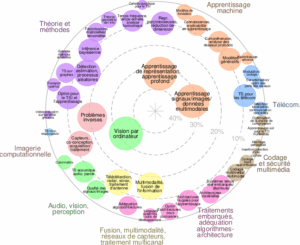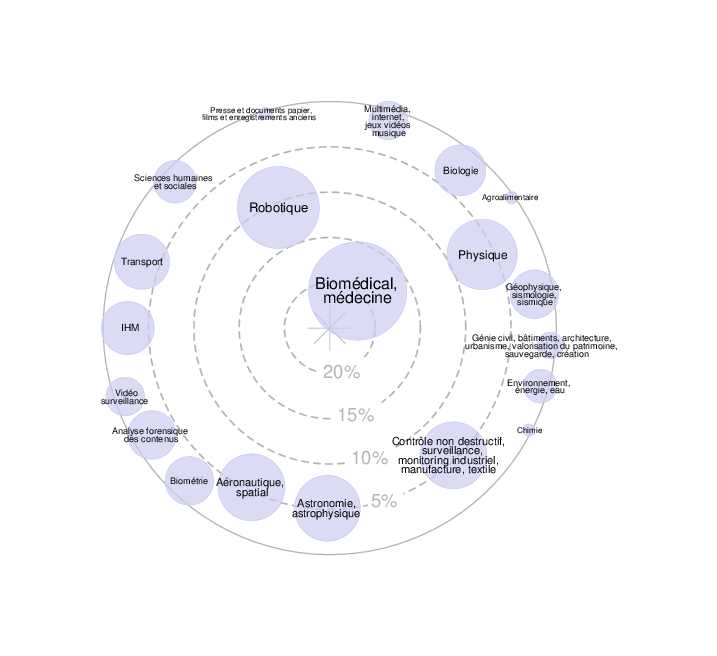Introduction
Epilepsy is one of the most common neurological diseases worldwide, affecting about 1.0% of the population. Several examinations are implemented to ensure optimal patient care and appropriate follow-up : clinical examination, electroencephalographic (EEG) recordings, magnetic resonance imaging (MRI), etc. Scalp EEG remains the most widely used examination because it is simple, non-invasive, low-cost, and offers excellent temporal, and even spatial, resolution.
EEG is a non-stationary and multivariate signal. For each EEG electrode, the univariate signal combines both :
– short-memory components (correlations that decay rapidly, typical of noise or local oscillations)
– and long-memory components (power-law persistent correlations over large time scales, reflecting sustained brain dynamics).
Moreover, multivariate signals exhibit well-established long-range temporal correlations (LRTC) in the literature [1,2,3]. These LRTC have been shown to be altered in several neurological disorders, notably depression, schizophrenia, and epilepsy [4,5,6].
To analyze these properties, [7] proposed an approach based on local Whittle estimation combined with quasi-analytic wavelets. This method locally approximates the spectral likelihood to capture non-stationary dynamics. It uses quasi-analytic wavelets to extract amplitude
and phase, and enables the estimation of both the strength and phase delay of connections between EEG signals. The objective of this internship is to experimentally validate the approach proposed in [7] on EEG signals from children with epilepsy.
Context
The pediatric neurology department of the Angers University Hospital (CHU d’Angers) has a cohort of EEG data collected from patients monitored in a clinical context. In this work, we will focus on recordings from five patients with childhood absence epilepsy (CAE). Recordings were acquired prior to treatment and at various time points during pharmacological follow-up.
The scientific hypothesis is that the interictal traces of CAE patients constitute control states in which treatment should not modify signal dynamics. The analysis will address both univariate short-and long-memory components and multivariate LRTC.
Methodology
The analysis will rely on a time–frequency approach using quasi-analytic wavelets, which provide an accurate representation of EEG signal amplitude and phase. Based on this decomposition, local spectral estimation will be performed using the Whittle method, yielding spectra as well as long-memory dependence parameters. These estimates will then be used to extract measures of functional connectivity between electrodes, characterized by both link strength and phase delays. Reproducibility of the results will be assessed at intra-subject and inter-subject levels using appropriate statistical analyses. Finally, the performance of this method will be compared with that obtained using more classical approaches based on the Fourier transform and standard wavelets.
Work to be carried out
Finalize the implementation of local Whittle estimation with quasi-analytic wavelets
[7] for the analysis of interictal EEG.
Characterize functional connectivity between electrodes (strength and phase delay) under different therapeutic conditions (before and during treatment) and in two recording states (eyes closed, eyes open).
Study intra-individual and inter-individual reproducibility of the results.
Assess the impact of methodological parameters: number of electrodes, window width, choice of
real vs. complex wavelet.
Compare short- and long-memory dynamics across conditions.
Scientific environment and perspectives
The work will be conducted in collaboration between LJK, Grenoble INP (Sophie Achard) and LARIS Angers (UA, UCO and CHU; Anne Humeau-Heurtier, Antoine Jamin, Nisrine Jrad, Patrick van Bogaert).
The internship will take place either in Angers or in Grenoble, depending on the candidate’s preference.
A continuation of this research topic as a PhD can be envisaged.
Candidate profile
The candidate should have a solid background in signal processing and programming for data science (R, Matlab, or Python).
The internship will take place between February and August 2026.
Applications (CV + cover letter + M1 and M2 transcripts + email of two references) should be sent to njrad@uco.fr by November 30, 2025. Applications will be reviewed on a rolling basis.
References
[1] Linkenkaer-Hansen, K., Nikouline, V. V., Palva, J. M., and Ilmoniemi, R. J. (2001). Long-range temporal correlations and scaling behavior in human brain oscillations. The Journal of neuroscience : the official journal of the Society for Neuroscience,21:1370–1377.
[2] Hardstone, R., Poil, S.-S., Schiavone, G., Jansen, R., Nikulin, V. V., Mansvelder, H. D., and Linkenkaer-Hansen, K. (2012). Detrended fluctuation analysis: A scale-free view on neuronal oscillations. Frontiers in Physiology, 3.
[3] Achard, S., Bassett, D. S., Meyer-Lindenberg, A., and Bullmore, E. (2008). Fractal connectivity of long-memory networks. Physical Review E – Statistical, Nonlinear, and Soft Matter Physics, 77:036104.
[4] Linkenkaer-Hansen, K., Monto, S., Rytsälä, H., Suominen, K., Isometsä, E., and Kähkönen, S. (2005).
Breakdown of long-range temporal correlations in theta oscillations in patients with major depressive disorder. Journal of Neuroscience, 25(44):10131–10137.
[5] Hare, S. M., Adhikari, B. M., Du, X., Garcia, L., Bruce, H., Kochunov, P., Simon, J. Z., and Hong, L. E. (2021). Local versus long-range connectivity patterns of auditory disturbance in schizophrenia. Schizophrenia research, 228:262–270.
[6] Grubov, V. V., Kuc, A. K., Kurkin, S. A., Andrikov, D. A., Utyashev, N., Maksimenko, V. A., Karpov, O. E., and Hramov, A. E. (2025). Harnessing long-range temporal correlations for advanced epilepsy classification. PRX Life, 3(1):013005.
[7] Achard, S. and Gannaz, I. (2024). Local whittle estimation with (quasi-) analytic wavelets. Journal of Time Series Analysis, 45(3):421–443.





